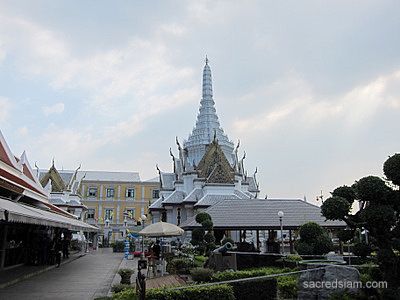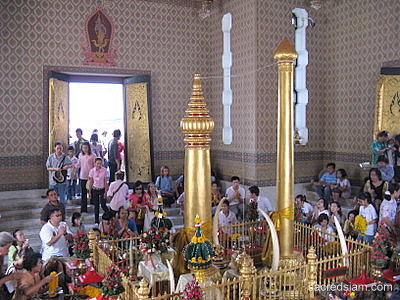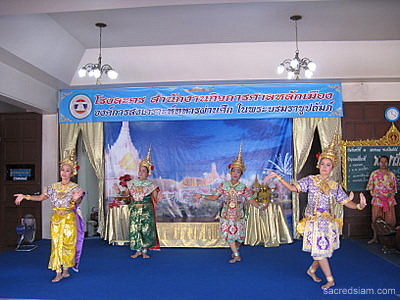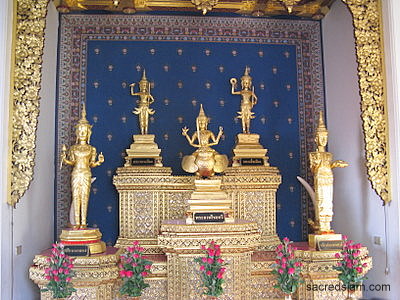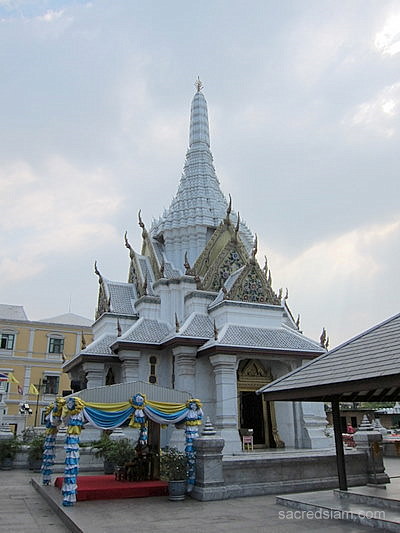Bangkok's City Pillar Shrine (San Lak Muang) is unique in having two pillars enshrined in one building. Installed
on April 21, 1782, by Phra Phutthayotfa (King Rama I r. 1782-1809), the original pillar was carved from a
5-meter trunk of chaiyaphruk (cassia) tree - meaning "tree of victory" in Thai - which had been used in a ceremony
to raise the morale of troops before a battle with the Burmese. The guardian spirit of the city was invited to take up
residence in the pillar and a horoscope formulated for the occasion later became the de facto horoscope for the nation.
The Thais were victorious in the battle, Bangkok became their new capital, and the pillar came to legitimize the
rule of the Chakri Dynasty.
King Mongkut (Rama IV r. 1851-1868) later added a second, shorter pillar to guide and protect the nation in dealing with
the encroaching colonial powers. It was King Mongkut who first officially referred to his country as Siam, a nation-state,
and coined the name Phra Siam Thewatirat (or Phra Siam Dewathiraj) for the nation's guardian spirit. The shrine,
which was refurbished in 2006, lies at the southeast corner of Sanam Luang, opposite Wat Phra Kaew. An estimated 1,000
people visit the shrine daily to make offerings and ask for wishes to be granted.

